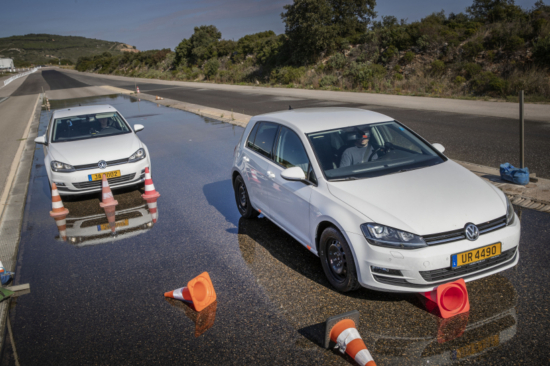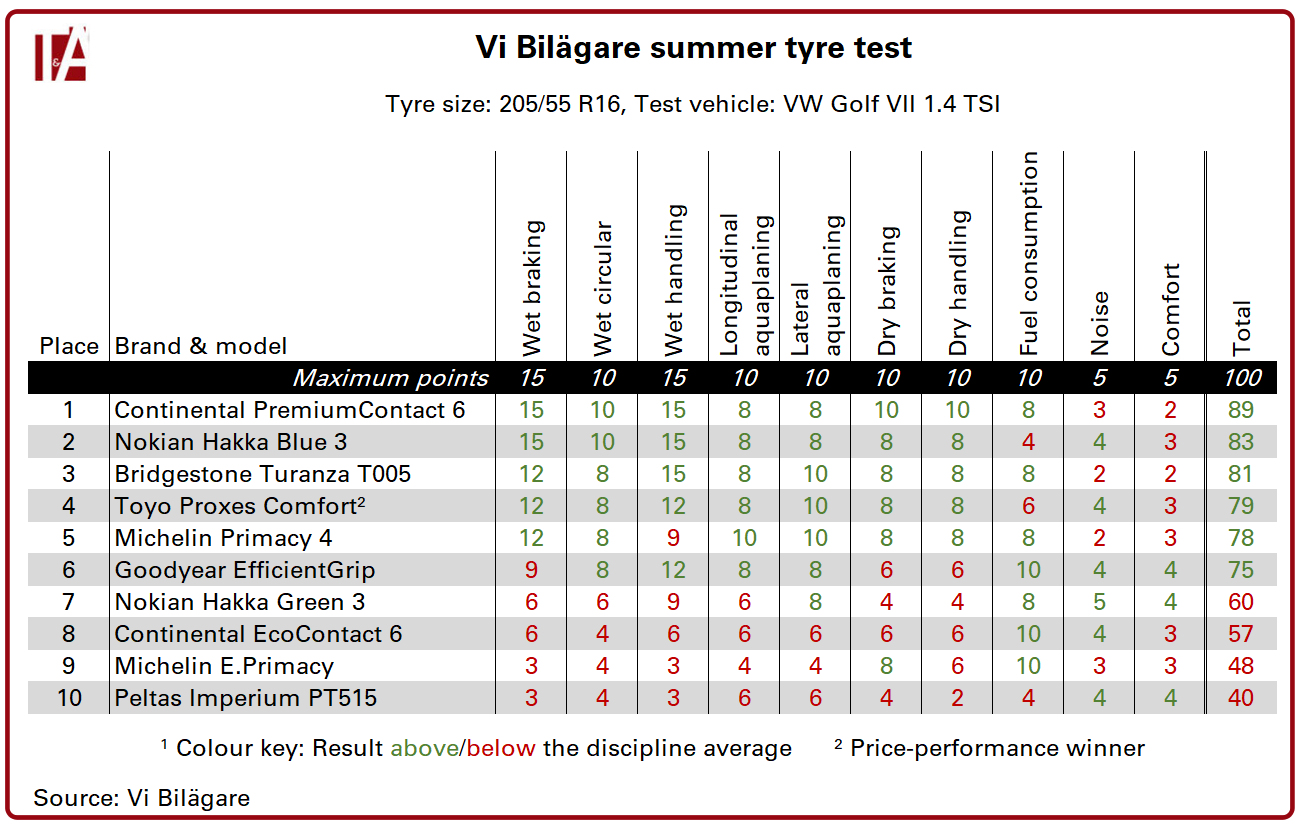“Scandal”: Trading safety for fuel economy
 A problem with rolling resistance optimised tyres is that they may not stop rolling even when you want them to (Photo: Vi Bilägare)
A problem with rolling resistance optimised tyres is that they may not stop rolling even when you want them to (Photo: Vi Bilägare)
In its recent test of ten summer tyres in the performance size 245/40 R19 98Y, Auto Bild reports that an original equipment tyre tested “by chance” alongside the aftermarket models delivered an “alarming result” in the wet braking test. Elaborating on this strongly worded evaluation, the motoring magazine explains that the OE specification tyre had been tweaked for optimally low rolling resistance – and thus minimal fuel consumption and CO2 emissions – at the expense of stopping distance on wet roads.
Although Auto Bild calculates that this tailoring of the OE tyre only resulted in a fuel saving of just three per cent, its braking distance in the wet was significantly longer than that delivered by most other tested tyres. The publication describes this as a “scandal” and states that it will explore the issue further in an upcoming, detailed test.
Swedish motoring magazine Vi Bilägare has already conducted a similar evaluation. Not too long ago, it tested ten 205/55 R16 summer tyres at the Mireval proving ground in France. For three of the tested brands, two different products from their portfolios took part in the test: a standard tyre and one optimised for minimal rolling resistance. Vi Bilägare set out to determine how much safety is sacrificed to achieve better environmental performance, and its findings were similar to those of Auto Bild.
Sibling rivalry
Vi Bilägare’s rolling resistance optimised tyres are the Nokian Hakka Green 3, Continental EcoContact 6 and Michelin e.Primacy. This trio finished the test of ten tyres in seventh to ninth place respectively, a result mainly stemming from smaller or larger drawbacks on wet roads. The three tyres competed against the conventional Continental PremiumContact 6, Nokian Hakka Blue 3 and Michelin Primacy 4.
Delivering the best result in the important wet braking discipline was the Nokian Hakka Blue 3, whose 80-0 km/h stopping distance of 28.6 metres was 5.1 metres shorter than that of its eco-sibling, the Hakka Green 3. Vi Bilägare reports a similar story for the Continental brand, with the PremiumContact 6 delivering a highly respectable stopping distance of 29.8 metres, 4.4 metres shorter than the distance achieved when driving on EcoContact 6 tyres. Michelin’s Primacy 4 stopped in 31.3 metres, a full five metres shorter than the Michelin e.Primacy.
The three fuel-saving tyres also drew short straws in dry conditions, with each delivering a longer braking distance than their standard counterparts. The difference was admittedly just 30cm for the Michelin tyre and around two metres for the Continental and Nokian.
As expected, the rolling resistance optimised tyres performed well in testing for fuel consumption, but otherwise finished down the lower end of the table in all individual test categories. In comparison, their three standard counterparts all secured a spot in the top half of the table. Vi Bilägare declared the Continental PremiumContact 6 test winner and the Nokian Hakka Blue 3 runner-up. It named the Nokian tyre best in the wet.
Economy advantage disproportionate to safety sacrifice
According to Vi Bilägare, the slight advantage in fuel economy offered by the three rolling resistance optimised tyres was disproportionate to the sacrifices in wet performance that have to be accepted. The publication measured fuel consumption of 5.1 litres per 100km for the EcoContact 6 and E.Primacy and just under 5.2 litres per 100km for the Hakka Green 3. In comparison, the VW Golf VII 1.4 TSI used for testing delivered fuel consumption of 5.5 litres per 100km even when fitted with the ‘thirstiest’ of the ten tyres.
Furthermore, some of the ‘normal’ tyres in the Vi Bilägare test delivered fuel consumption comparable to the Hakka Green 3, but with significantly less compromise in wet performance. For example, Vi Bilägare reports fuel consumption of just over 5.1 litres per 100km for the Goodyear EfficientGrip Performance 2, while the values for the Bridgestone Turanza T005 and PremiumContact 6 were respectively 5.2 and just under 5.3 litres per 100km.
Safety compromise too high
Although the VW Golf’s fuel consumption was lowest when fitted with the EcoContact 6, the Swedish testers were unable to recommend purchasing this tyre due to its performance in the wet. Similarly, they comment that Michelin took its environmental thinking “too far” with the E.Primacy, something most noticeable on wet roads.
“Unfortunately, the safety problems of environmental tyres on rainy roads are still unresolved,” concludes Vi Bilägare. “The stopping distance for the best eco-tyre on wet asphalt is more than a car length behind the discipline winner. The worst eco-tyre stops almost two car lengths later. This from a modest 80 km/h.” The testers add that although the automotive industry may appreciate these low rolling resistance tyres, after a week of testing they felt “highly critical” of these tyres being chosen for replacement purchases: “The safety compromise is too great.”





Comments